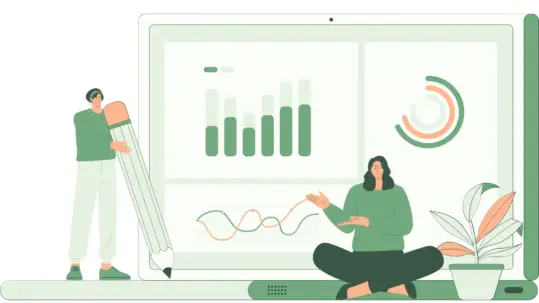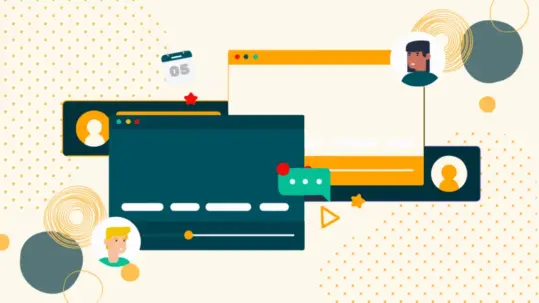
15 Jul Audiovisual content: closed captioning and SDH
HERE’S THE AUDIO VERSION OF THIS BLOG POST, ENJOY LISTENING!
This article is part of a series of posts on accessibility here on the Creative Words blog. As we know, translation and localization are to bring as much content as possible to as many people as possible. Accessibility is a natural extension of this concept. Keep following us to learn about a vast and crucial aspect of our industry.
In the first article on this topic, we addressed the challenges and solutions that make an audiovisual content accessible. Specifically, audiovisual content consists of a video track and an audio track: in this article we find out how to make the latter more accessible.
We live in a world increasingly dominated by audiovisual content: we communicate through GIFs, we share stories on Instagram, we feel lost and excluded if we haven’t seen the latest episode of a viral TV show… In short, audiovisual content has become some sort of universal language that often tells a lot about us, what we like, and what values we identify with.
However, this content is not equally usable for everyone. According to the World Health Organization (WHO), 466 million people in the world are deaf, and data suggest that the number will increase to 990 million by 2050.
The accessibility of audiovisual content
Access to audiovisual content is not something incidental, but has been declared a fundamental human right by the 2006 United Nations Convention on the Rights of Persons with Disabilities (CRPD). Indeed, Article 30 establishes something as obvious as it is inescapable: people with disabilities have the right to “enjoy access to television programs, films, theater, and other cultural activities, in accessible formats.” Through this international convention and other legislation, many countries have adopted specific laws addressing the need to include subtitles in audiovisual content to ensure equal access for all citizens.
Viewers of subtitled content are on the rise, and it is not just deaf or foreign-speaking people.

According to a Digiday article, 85% of Facebook videos appear without audio and with subtitles enabled. In an era dominated by the presence of audiovisual content, creators are paradoxically returning to written text to capture the attention of their viewers. Indeed, it seems that Generation Z prefers captioned videos because it allows them to follow a piece of content and do other activities at the same time or to follow content without the use of headphones on public transportation, for example.
How to make your video content accessible
The most popular video streaming platform recently issued this statement about the use of subtitles for the hearing impaired within its service:
“By increasing the availability of SDH and AD to more than 20 languages, we hope to provide all subscribers with the ability to see their lives reflected on the screen, regardless of where they come from, language spoken or disability.” (Netflix)
Do you also want to make your video content accessible to a wider audience? The addition of subtitles can contribute to this goal: it is in fact an added value to more people and for different reasons.
There are several strategies for transcribing video content depending on the specific needs and objectives of the video: captions or closed captions (CC), “simple” subtitles, and subtitles for the deaf and hard of hearing (SDH).
Subtitles
We all know about subtitles: they are a translated version of a video transcript and appear as text at the bottom of the screen. Subtitles are generally aimed at viewers who do not speak the language used in the audio of the video, but can still hear the audio track. To translate content is for all intents and purposes to make it accessible.
For example, if a film is made in English but is shown in a place where French is the predominant language, the film might include French subtitles. However, because basic subtitles assume that viewers are neither deaf nor hard of hearing, they do not include other basic elements of the audio track (such as description of music, sound effects, or differentiation of speakers).
Closed Captions (CC)
Closed Captions (CC) are the transcript of a video’s dialogue and audio cues and appear as text at the bottom of the screen. These captions generally can be turned off or on and are useful for deaf or hard-of-hearing viewers because they include background noise, speaker differentiation, and other relevant information.
Captions will include more detailed elements such as: [UPBEAT MUSIC], [BRYAN LAUGHS], [PHONE RINGS].
Subtitles for the deaf and hard of hearing (SDH)
The acronym SDH stands for “Subtitles for the Deaf and Hard of Hearing”.
These subtitles are a kind of combination of the previous two types of subtitles. This is a more recent invention, originally introduced in America by the DVD industry. The term SDH generally refers to regular subtitles in the original language of the video, but they also include important non-dialogue information, such as speaker identification.
SDH subtitles include indicators of each audible element:
- Sound effects: for example, gunshots, dog barking, phone ringing, SMS notifications, clashes between lightsabers, etc.
- Identification of the speaker: without a symbol or name identifying the speaker, dialogue lines follow one another, leaving the viewer confused as to who said what and when. This is particularly relevant for off-screen speakers.
- Music: lyrics and musical descriptors are important elements of a production’s soundtrack and are always included in SDH subtitles.
SDHs then combine the audio track information with the language information to create a single subtitle file. In this way, the file can be accessible to the public in foreign languages, regardless of disability. In addition, SDH subtitles make content more accessible to a wide range of people because they also help viewers with attention deficit or cognitive differences to focus on the video.
Toward accessibility
If you want to add SDH subtitles to your audiovisual content, you may have noticed that there are automatic subtitling solutions (such as the one offered by YouTube), but at the moment they are not really effective for the following reasons:
- translation is often mechanical or confusing;
- computers may not understand different accents or slang terms, even within the same language;
- computers may disregard other relevant audio information;
- background noises, whispered dialog, conversational speed, or low quality audio may interfere with the computer-generated subtitling program;
- technical issues, such as video blocking, may confuse the automatic subtitling program;
- the automatic subtitler may not be able to distinguish the speakers or the lyrics of the background music from the dialogues.
For these reasons, if you plan to make your audio content truly accessible, it is always advisable to rely on expert professionals.
Breaking down communication barriers and making content accessible has always been the goal of every translator.

Netflix addict and late-night car singing enthusiast. Loves quoting books and movies randomly. Hits the snooze button 50 times in a row.





